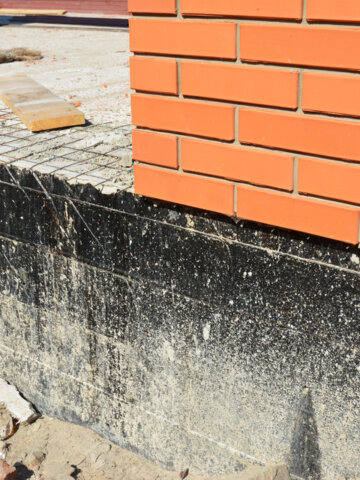Blog
A Guide To Waterproofing Foundation Walls From Inside
In the realm of commercial construction services, maintaining the structural integrity of buildings is paramount. As businesses and organizations invest significantly in their infrastructures, ensuring that foundation walls remain free from moisture damage becomes a crucial priority. One effective approach, especially when exterior interventions might be challenging, is waterproofing foundation walls from inside. This article delves into the nuances of this method, providing a comprehensive understanding of its significance and application.
Why Opt for Interior Waterproofing?
Choosing the right waterproofing method often hinges on specific circumstances. The decision to waterproof from the inside isn’t always about preference; sometimes, its about necessity. There are scenarios where exterior access is restricted due to physical barriers like neighboring buildings, mature landscaping, or infrastructure such as pathways and driveways. Undertaking an exterior waterproofing in such cases could mean significant disruption or even damage to these structures. This not only escalates costs but also extends the project’s duration.
Additionally, for older buildings, external excavation can pose risks. Disturbing the ground around an aged foundation might lead to unintended structural shifts, causing more harm than good. On the other hand, internal waterproofing methods can be implemented with minimal disruption to daily operations, especially crucial for commercial establishments that cannot afford prolonged downtimes.
Moreover, budgetary considerations often dictate the choice. Exterior waterproofing, due to its extensive nature, tends to be pricier. For businesses working within a limited budget, yet still seeking effective moisture control, interior solutions offer a cost effective alternative without compromising on protection.
Understanding the Role of Drainage
Waterproofing is as much about management as it is about prevention. When we talk about internal waterproofing, we are not just focusing on stopping water but managing how it moves. Any moisture that makes its way into the foundation needs a clear exit path, and that’s where the internal drainage system steps in.
The concept is simple yet effective: strategically placed channels and drains capture infiltrating water, directing it towards a sump pump system. This pump then expels the water out and away from the foundation. This approach ensures that even if some moisture makes its way inside, it is promptly dealt with before it can cause any significant damage.
But why is such a system so crucial? In the absence of effective drainage, water can pool within the foundation, exacerbating the damage. Prolonged exposure to this moisture can weaken the foundation walls, cause mold and mildew growth, and even lead to significant structural issues. An effective drainage system, therefore, is not just an addon but an integral component of the internal waterproofing strategy.
Sealants and Coatings: More Than SurfaceLevel Protection
When it comes to waterproofing foundation walls from inside, the use of sealants and coatings is commonplace. These products serve as a barrier against minor moisture infiltration, filling in pores and hairline cracks. High Quality sealants can also provide protection against mold and mildew, ensuring a healthier environment within the building. However, while these solutions are valuable, relying solely on them without considering drainage can be a mistake, as they might not withstand significant water pressure over time.
Addressing Larger Cracks and Infiltrations
Not all water issues are due to minor cracks or porous concrete. Sometimes, more pronounced cracks or gaps can become channels for water infiltration. In such cases, the use of specialized materials, like hydraulic cement or epoxy injections, becomes vital. These products not only seal the cracks but also expand within them, ensuring a watertight seal that can withstand the pressures exerted by external moisture.
Monitoring and Maintenance: The Ongoing Journey
Waterproofing foundation walls from inside isn’t a one off task. Like all aspects of commercial construction services, continuous monitoring and periodic maintenance are essential. Over time, the applied sealants might wear off, drainage systems could clog, or new cracks might develop. Regular inspections ensure that these issues are addressed promptly, ensuring the longevity of the waterproofing efforts.
The Importance of Professional Expertise
While the concept of interior foundation waterproofing might sound straightforward, its effective implementation requires expertise. Commercial construction services providers have the knowledge, tools, and experience to ensure that the chosen solutions are not only appropriate for a specific building but also implemented with precision. Their expertise ensures that potential challenges are anticipated, and solutions are tailored to offer the best protection for the foundation.
Waterproofing foundation walls from inside offers a robust solution to moisture challenges, especially in scenarios where exterior interventions are impractical. By understanding the components of this approach, from sealants and drainage to professional expertise, stakeholders can ensure that their commercial infrastructures remain resilient, durable, and free from the detrimental impacts of water damage.





